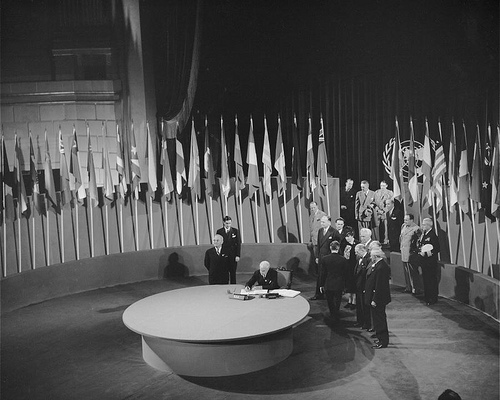October 24 is United Nations (UN) Day, marking the day the organization came into existence. You typically see it in the news. Most likely, your country is also one of the UN member states.
Most of us have accepted the presence of the organization in passing without fully grasping its place and its influence in the world’s affairs. At the back of your mind, you might be wondering: what the UN is exactly, what does it do, and why does it exist in the first place?
Now, it is time to shed some light.
What is the UN?
Before the UN came to be, there was the League Of Nations which was formed after World War 1 to “promote international cooperation and to achieve peace and security.”
The United Nations was officially ratified after the San Francisco conference of 1945. In the conference, delegates from 50 nations gathered in order to create the United Nations Charter. The delegates of the conference envisioned UN as an organization which would preserve peace and would help in building a better world.
From our partners:

Who are members of the UN?
Right now, there are 193 member states in the UN. This encompasses the majority of the world’s countries today. However, there remains to be non-member states. Some of these states have observer status, meaning they can partake in UN general assemblies and have access to UN documents.
Typically, non-member, observer states eventually become full members upon recognition by a large number of member states or upon attaining an economy stable enough to support the UN’s international initiatives. Meanwhile, other non-member states do not have this status. Though, some UN members recognize these non-member, non-observer states as independent.
Here is a quick summary of states which are not members of the UN at present:
Non-member States with Observer Status
- Palestine
- The Holy See (Vatican City)
Non-member States without Observer Status
- Kosovo (recognized by 102 U.N. member states)
- Western Sahara (recognized by 44 U.N. member states)
- Taiwan (recognized by 16 U.N. member states)
- South Ossetia (recognized by 5 U.N. member states)
- Abkhazia (recognized by 5 U.N. member states)
- Northern Cyprus (recognized by 1 U.N. member state)
What does the UN do?
The UN Charter specifies four main goals of the UN:
- Maintain international peace and security;
- Develop friendly relations among nations;
- Achieve international cooperation in solving international problems; and
- Be a centre for harmonizing the actions of nations in the attainment of these common ends.
The performance of UN in attaining these goals has been quite a mixed bag. For the most part, however, the UN’s peacekeeping initiatives did decrease the amount of people who die in conflict in the first decade of the 21st century.
Other UN agencies such as Food and Agriculture Organization (FAO), World Food Programme (WFP), and United Nations Educational, Scientific, and Cultural Organization (UNESCO) also aid in solving issues like world hunger and culture preservation.
The United Nations is in no way a panacea to the problems plaguing the world. However, it has become a symbol of peace and collective action. It is a reminder that the best way for us to solve the problems in this world is to act in harmony, putting our differences aside.












